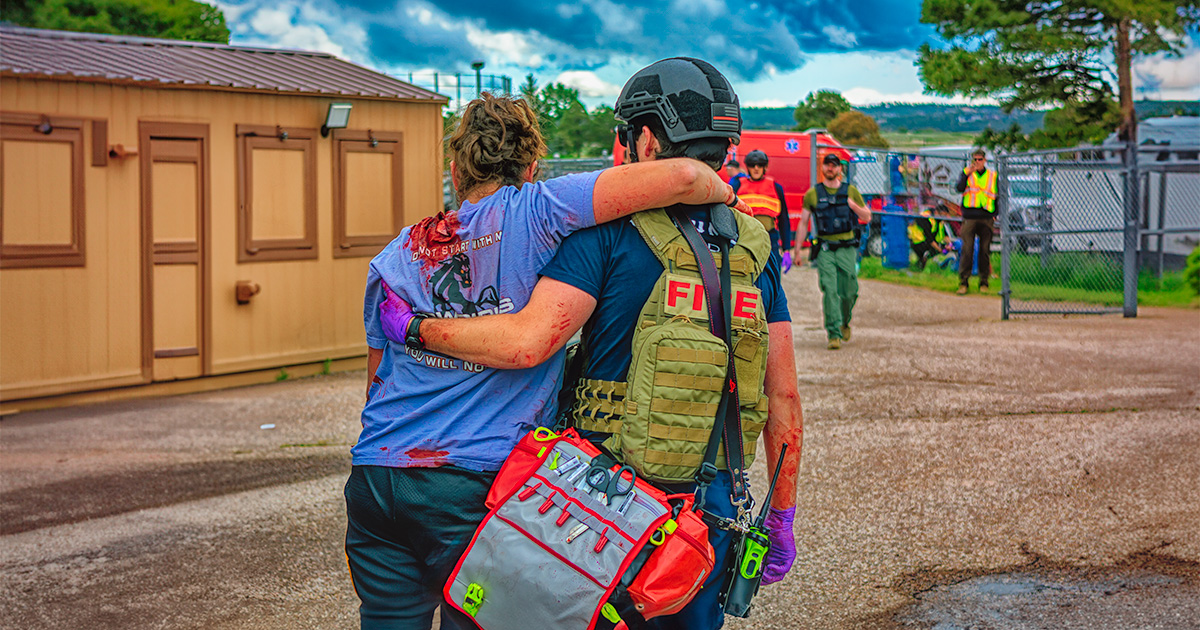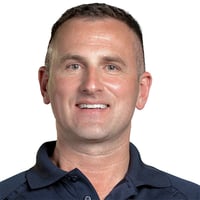Does Your Team Feel Unseen? Close the Leadership Disconnect with 2-Way Communication
Editor's Note: In July 2025, EMS1 and Fitch & Associates released their annual EMS trend survey, What Paramedics Want, proudly sponsored by Pulsara....
4 min read
 Team Pulsara
:
Aug 14, 2024
Team Pulsara
:
Aug 14, 2024

Mass casualty incidents present a number of unique challenges. They're unplanned, unpredictable, and come with a number of unknowns. Responders from multiple agencies may be working the same scene, providing mutual aid and trying to work together to stabilize patients and get them care as quickly as possible.
In such a high-pressured environment, communication and coordination are critical. As lives hang in the balance, the ability to track patient movement, manage resources, and ensure that everyone involved in the response is working from the same playbook can mean the difference between life and death.
Over the past eight years, healthcare providers in Colorado have relentlessly pursued methods to improve communication between EMS and the hospital, and now between all parties who respond to mass casualty incidents.
 Dr. Jeremy DeWall is the dedicated Medical Director for the Pikes Peak, Southern, and Southeastern Colorado Regions. In the webinar Streamlining Crisis Response (watch the full webinar below), Dr. DeWall discussed how Colorado is simplifying communication and collaboration around tracking patient movement during MCIs and navigating reunification during incidents and evacuations. Dr. DeWall has been at the forefront of reshaping how critical incidents are managed in Colorado. Through innovative solutions and a commitment to improving emergency response, Dr. DeWall and his team are setting new standards in crisis management.
Dr. Jeremy DeWall is the dedicated Medical Director for the Pikes Peak, Southern, and Southeastern Colorado Regions. In the webinar Streamlining Crisis Response (watch the full webinar below), Dr. DeWall discussed how Colorado is simplifying communication and collaboration around tracking patient movement during MCIs and navigating reunification during incidents and evacuations. Dr. DeWall has been at the forefront of reshaping how critical incidents are managed in Colorado. Through innovative solutions and a commitment to improving emergency response, Dr. DeWall and his team are setting new standards in crisis management.
Around 2016, a group of medical directors in the Colorado Springs, Teller County, and El Paso County areas sought out a way to improve communication between EMS and the hospital. They decided to focus specifically on STEMI and stroke care, and chose to adopt Pulsara. As communication improved, they saw decreases in time-to-treatment and better communication between EMS and the emergency department. “We've had gradual growth of the utilization of Pulsara to the point that we actually utilize it daily for about 4500 calls per month total in the Plains to Peaks RETAC, or the Teller El Paso area,” said Dr. DeWall.
COVID-19 was the first large-scale, ongoing event they used Pulsara for. While hospitals in some parts of the nation were overcrowded, Teller County faced a unique challenge: their patients needed care, but weren’t seeking it out because they felt others needed it more. “We have a lot of very stoic people that said, you know, ‘I don't really need to go to the hospital because everyone says, “Stay at home.” The hospitals are busy, other people are sicker,’" said DeWall. "So we actually found a large group of people who were not utilizing the health care system, even when they were relatively sick or extremely sick. Which obviously ended up causing more morbidity and mortality in our communities potentially. With that, we also had a lot of patients who were afraid to go to healthcare centers because they were worried they’d catch COVID-19 by going to the emergency department.”
In an effort to solve the problem, DeWall and his colleagues turned to Pulsara. “We reached out to them and said, ‘We need a telehealth platform that we can [use to] get board-certified emergency medicine docs into the home with our first responders, whether it be fire department, volunteer first responders, or our transport agencies, and be able to at least try to provide care to these patients, discuss with them whether or not we think they need to go to the E.R. for further care, or be able to get prescriptions and other components to them in their community by utilizing telehealth.’ This started in 2020, obviously, with the COVID-19 pandemic, and was hugely successful in managing our almost two-year mass casualty event that we were dealing with in our rural communities with extremely limited resources.”
The program successfully reduced COVID-19 exposures by avoiding transport to the hospital when possible. Patients who would not have received an evaluation and care by a board-certified emergency medicine physician were able to receive care in their homes, including medications, referrals to primary and specialty physicians, and other community resources. (Check out the case study here.)
After its successful use during the COVID-19 pandemic, use of Pulsara for time-sensitive emergencies expanded out from Colorado Springs to areas across the state. But over the past few years, medical and emergency management professionals have turned their attention to solving a problem that has plagued healthcare for a long time: how to track patient movement during mass-casualty incidents.
Following the tragic Club Q shooting in Colorado Springs, those involved in the response became determined to improve their systems for tracking patient movement and alerting hospitals about active incidents and incoming patients.
“We've been trying to solve this mass casualty thing forever in EMS. This has been going on since emergency medicine started, and well before that,” said DeWall. “And what I've really learned throughout my career doing this, both as a paramedic and as an EMS physician, is that we tend to keep doing the same old thing, even though it doesn't work. And that was our situation in Colorado. We had a platform that was around for almost a decade plus and it never got used in any mass casualty event, of which, as we know, Colorado has had a lot of those.”
That changed in 2023, when DeWall and his colleagues resolved to dig into the matter. “We engaged our agency partners, the state levels, the RETACs, everything, and really [got] that group together to say, ‘Enough's enough. What we're doing doesn't work.’ We actually need to come up with a solution that works every day for patients [and] has real value to the hospitals and to our providers and agencies.”
Two of the needs they identified were the ability to quickly alert local hospitals about an incident and an easy process for load-balancing patients between facilities. “Nobody in this situation really has time to contact all of our local hospitals and say, ‘Hey, who can take these patients? Who can deal with this or manage it?’ even in smaller-scale events,” explained DeWall. “Utilizing Pulsara[‘s] mass casualty function really allows us to alert hospitals quickly.”

Inspired by the system currently being used in Texas, Colorado has begun leveraging Pulsara with statewide wristbands that are designed to stay with the patient through the entirety of their care journey. Providers use Pulsara to scan the wristband and quickly add information about each patient. The next provider who cares for the patient can then use Pulsara to scan the band and instantly access the information they need to continue caring for their patient. Marked with the words “Do not remove until patient discharge,” the bands are now being used both in mass casualty incidents and every day for routine patients.
“The thought process with this is: every patient, every day gets a wristband. So if you do it [for] every patient every day, in a mass casualty or disaster event, you're used to doing it,” said DeWall. “It takes a second to stick [it] on there, take a scan, snap a picture of their face, and then when we find an ID at some point, we scan that in, so we have that information. Once we know who that patient is, it allows everyone from first responders all the way through to our hospitals to our transport agencies to be able to have them properly identified for tracking for your ePCR completion, for your billing, for reunification, for all those components."
![]()
To learn more about how healthcare organizations in Colorado and Texas are using Pulsara to provide cutting-edge care for patients on a state level, check out the recorded webinar Leveraging Technology In Hazard Response: Advancements And Future Trends.

Editor's Note: In July 2025, EMS1 and Fitch & Associates released their annual EMS trend survey, What Paramedics Want, proudly sponsored by Pulsara....
![[PRESS RELEASE] Published Research Finds Up to 31% Faster STEMI Treatment Times in Rural Hospital Setting with Pulsara](https://www.pulsara.com/hubfs/_1_website-page-blog-assets/pulsara-hosp-teams-assign-cardio-stemi-rn-1200x701.jpg)
Published research shows how using Pulsara, alongside standardized field activation and a focus on stakeholder relationships, improves STEMI care and...

Editor's Note: In July 2025, EMS1 and Fitch & Associates released their annual EMS trend survey, What Paramedics Want, proudly sponsored by Pulsara....